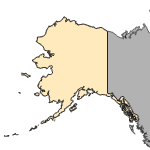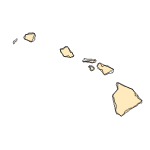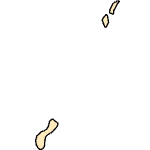Graptemys geographica
(Northern Map Turtle)
Reptiles-Turtles
Native Transplant |
|
Common name: Northern Map Turtle
Taxonomy: available through
www.itis.gov
Identification: As the name implies, the Northern Map Turtle exhibits a yellow map or maze-like pattern on the otherwise olive to black carapace, limbs, and tail (Ernst et al., 1994; Conant and Collins, 1998). It displays a yellowish spot behind the eye, which is smaller than the eye spot seen on the False Map Turtle (Graptemys pseudogeographica) (Conant and Collins, 1998). The carapace exhibits a very shallow arch, low middorsal spines, and serrations along the posterior margin (Ernst et al., 1994; Conant and Collins, 1998).
Size: Carapace length: females - 18 to 27 cm and males - 9 to 16 cm
Native Range: G. geographica occurs in the central United States including Minnesota, Michigan, Iowa, Illinois, Missouri, Kansas, Oklahoma, Arkansas, Tennessee, Kentucky, Indiana, and Ohio east to Virginia, West Virginia, Pennsylvania, New York, New Hampshire, and Quebec and south to Georgia, Alabama, and Mississippi. Isolated populations occur in Pennsylvania, New Jersey and New York including the Susquehanna River system of Pennsylvania, Maryland, and Delaware (Ernst et al., 1994; Conant and Collins, 1998).



|

Alaska |

Hawaii |

Puerto Rico &
Virgin Islands |

Guam Saipan |
Hydrologic Unit Codes (HUCs) Explained
Interactive maps: Point Distribution Maps
Nonindigenous Occurrences:
Table 1. States with nonindigenous occurrences, the earliest and latest observations in each state, and the tally and names of HUCs with observations†. Names and dates are hyperlinked to their relevant specimen records. The list of references for all nonindigenous occurrences of Graptemys geographica are found here.
Table last updated 11/21/2024
† Populations may not be currently present.
Means of Introduction: The turtle was probably an escaped or released pet (Cardoza et al., 1993).
Status: Not established. Because just one specimen was collected, Cardoza et al. (1993) infer that no breeding population exists.
Impact of Introduction: No impact was documented. An established population could impact aquatic invertebrates like crayfish, insects, snails, and clams which make-up the bulk of the G. geopgraphica diet (Ernst et al., 1994).
References: (click for full references)
Cardoza, J. E., G. S. Jones, T. W. French, and D. B. Halliwell. 1993. Exotic and Translocated Vertebrates of Massachusetts. Fauna of Massachusetts Series 6. Massachusetts Division of Fisheries and Wildlife, Westborough, Massachusetts. 106 pp.
Conant, R., and J. T. Collins. 1998. A Field Guide to Reptiles & Amphibians. Eastern and Central North America. Third Edition, Expanded. Houghton Mifflin Company, Boston. 616 pp.
Crother, B.I. (chair). Committee on Standard and English and Scientific Names. 2008. Scientific and standard English names of amphibians and reptiles of North America north of Mexico, with comments regarding confidence in our understanding. Society for the Study of Amphibians and Reptiles Herpetological Circular. No. 37. iii + 86p.
Ernst, C. H., J. E. Lovich, and R. W. Barbour. 1994. Turtles of the United States and Canada. Smithsonian Institution Press, Washington and London. 578 pp.
Author:
McKercher, E.
Revision Date: 1/16/2003
Citation Information:
McKercher, E., 2024, Graptemys geographica (LeSueur, 1817): U.S. Geological Survey, Nonindigenous Aquatic Species Database, Gainesville, FL, https://nas.er.usgs.gov/queries/FactSheet.aspx?SpeciesID=1240, Revision Date: 1/16/2003, Access Date: 11/21/2024
This information is preliminary or provisional and is subject to revision. It is being provided to meet the need for timely best science. The information has not received final approval by the U.S. Geological Survey (USGS) and is provided on the condition that neither the USGS nor the U.S. Government shall be held liable for any damages resulting from the authorized or unauthorized use of the information.